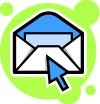 Those of you interested in building a sustainable life stories program at your local hospice will need more than good will and enthusiasm although that helps. I hope that the experience I gained in establishing a life stories service at Victoria Hospice will be of help to you.
Those of you interested in building a sustainable life stories program at your local hospice will need more than good will and enthusiasm although that helps. I hope that the experience I gained in establishing a life stories service at Victoria Hospice will be of help to you.
One of the factors that weighed in my favor was the growing academic research supporting the value of life stories. It’s not uncommon for some medical professionals to see life stories as a frill, not something that can complement end-of-life support. Being armed with the relevant research can bolster your proposal.
Here’s a suggestion. Before attempting to initiate a hospice life stories program, familiarize yourself with the research. Two studies in particular that I’d recommend are :
Dignity Therapy: A Novel Psychotherapeutic Intervention for Patients Near the End of Life. Harvey Max Chochinov, Thomas Hack, Thomas Hassard, Linda J. Kristjanson, Susan McClement, and Mike Harlos. Journal of Clinical Oncology. 2005; Vol. 23, No. 24
Ninety-one percent of participants reported being satisfied with Dignity Therapy; 76% reported a heightened sense of dignity; 68% an increased sense of purpose; 67% a heightened sense of meaning; 47% an increased will to live; 81% reported that it had already, or would be of help to their family.
Legacy Activities as Interventions Approaching the End of Life. Rebecca S. Allen, Michelle M. Hilgeman, Margaret A. Ege, John L. Shuster, Louis D. Burgio. Journal of Palliative Medicine. September 2008, 11(7): 1029-1038. doi:10.1089/jpm.2007.0294.
Intervention patients reported decreased breathing difficulty and increased religious meaning. Caregivers and patients reported greater social interaction on the part of the patient. All participants in the intervention group initiated a Legacy activity and reported that Legacy improved family communication. Legacy interventions hold promise and are simple to implement.
Other studies of older people and reminiscence have also shown promising results. One in particular is:
Evaluating the Impact of Reminiscence on the Quality of Life of Older People. A report by the Economic and Social Research Council about a piece of research on reminiscence they carried out with 142 older people in 2003.
Reminiscence activity results in psychological benefit for older people. Older people in our study who participated in activities were found at the end of the period of intervention to have better psychological morale and less psychological morbidity, and show more positive emotion and less negative emotion, than older people in our study who had not participated in our activities.
A pioneer in the interdisciplinary study of aging is Robert N. Butler. One of his seminal articles, Age, Death, and Life Review, is a must read. This article originally appeared in Living With Grief: Loss in Later Life, Kenneth J. Doka, Editor, © Hospice Foundation of America, 2002.
The life review, as sometimes manifested by nostalgia and reminiscence, is a natural healing process. It represents one of the underlying human capacities on which all psychotherapy depends. Some of the positive results of a life review can be the righting of old wrongs, making up with estranged family members or friends, coming to accept one’s mortality, gaining a sense of serenity, pride in accomplishment, and a feeling of having done one’s best.
In Part Two, I’ll look at some of the practical steps that will help ensure the successful implementation of a hospice life stories program.
Photo by iStockphoto
If you enjoyed this post, get free updates by email.






























































